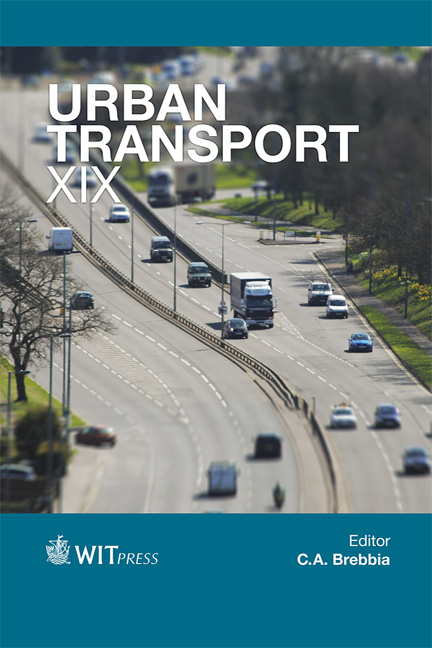Modelling Public-transport Users’ Perception Of Out-of-vehicle Times Using Cumulative Prospect Theory And Fuzzy Logic
Price
Free (open access)
Transaction
Volume
130
Pages
12
Page Range
585 - 596
Published
2013
Size
188 kb
Paper DOI
10.2495/UT130471
Copyright
WIT Press
Author(s)
S. J. Chowdhury & A. Ceder
Abstract
Modelling public-transport users’ perception g cumulative S. J. Chowdhury & A. Ceder Faculty of Engineering, Department of Civil and Environmental Engineering, University of Auckland, New Zealand Abstract Out-of-vehicle times for public-transport users have been shown to be perceived as being more onerous than in-vehicle time when making transfers. The objective of the present study is to determine the effects of uncertainty, in out-ofvehicle times during transfers, on users’ willingness to use transfer routes. A user preference survey was conducted at two major public-transport terminals in Auckland, New Zealand. The survey data was modelled using the cumulative prospect theory and fuzzy logic. To the authors’ knowledge, this study provides for the first time in literature a comparison between the two cognitive models. Analysis suggested that both models are capable of representing transit users’ out-of-vehicle behaviour when making transfers. The results showed that for all trip attributes, except for comfort, transit users’ exhibited greater preference for the transfer route with less uncertainty in the out-of-vehicle times. For comfort, defined as the wait time for an available seat at stations, transit users’ displayed risk-taking characteristics. Keywords: travel behaviour, public transport, transfers, cumulative prospect theory (CPT), fuzzy logic.
Keywords
Keywords: travel behaviour, public transport, transfers, cumulative prospect theory (CPT), fuzzy logic.





